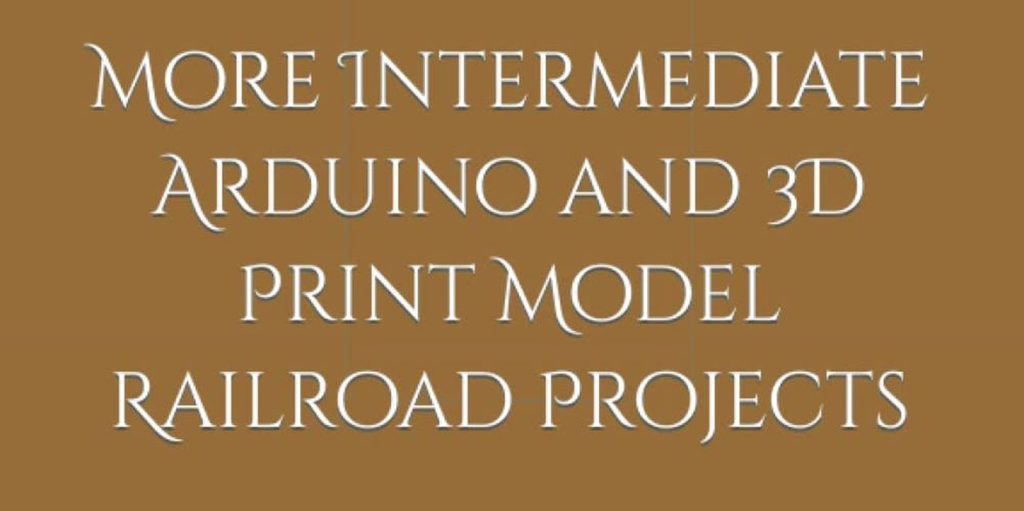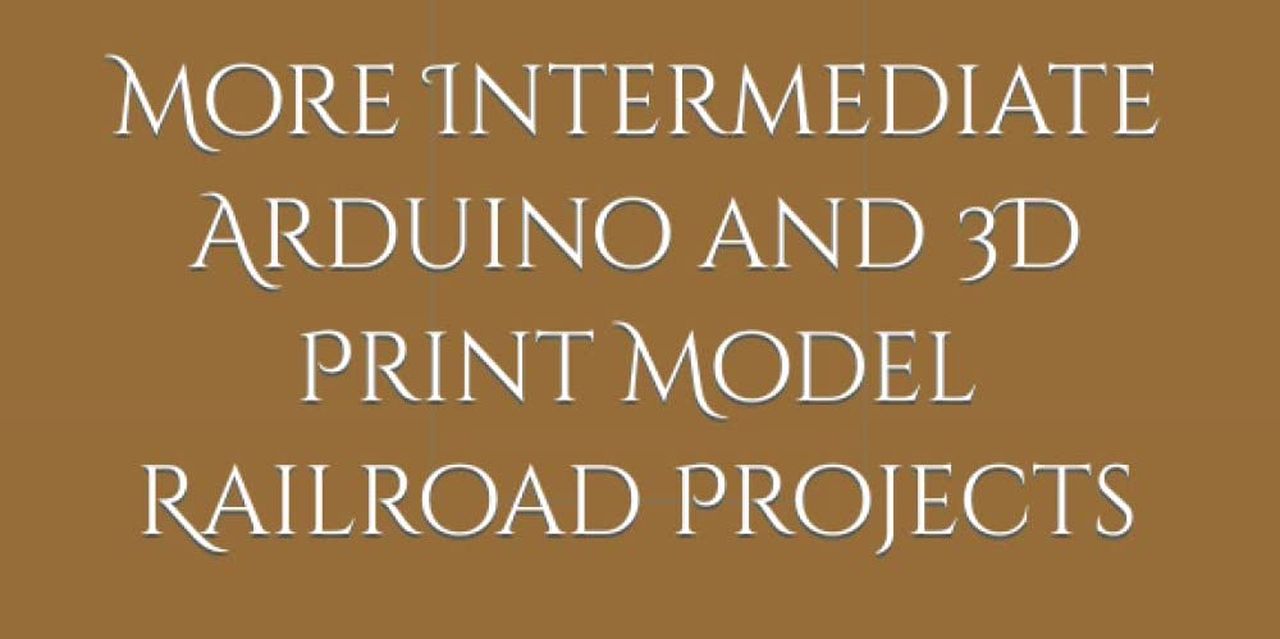
This week’s selection is “More Intermediate Arduino and 3D Print Model Railroad Projects” by Paul and David Bradt.
This book focuses on electronics, but also on 3D printing.
While many 3D printer operators produce static objects, and some print parts that can be assembled into small machines, the king of the hill is to put some smarts into your 3D print project. That requires a processor, but how do you do this?
The typical processors used in such projects are either Raspberry Pis or Arduino boards, both of which are specifically designed to be embedded in machines and provide a platform for those desired smarts.
The smarts come from the logic of the software loaded on the board, as it interprets the values of sensors linked to the board’s input ports. This software can be either written yourself, or obtained from a third party that’s already made the software. In fact, there are many thousands of free, open source software packages for these boards that can be readily used.
This book helps you get started into this world by providing a number of real-world example projects. While they are targeted at model railroaders, many of whom use 3D printing for projects, the principles behind the projects are easily translatable into many other domains.
Projects include:
- Arc Weld Simulator
- Train Station Analog Clock
- ABS Common Cathode Signal Light
- Reverse Loop
- Machine Shop
- Observation Camera
- JMRI Integration (Java Model Railroad Interface)
The projects describe how to fully build the item, but also use a variety of processor boards. Several species of Arduino boards are used, as well as Raspberry Pi models. Discussion of the differences is also included.
There is also a considerable amount of discussion on 3D printing. The projects include some basic introductory material showing how to 3D print static items to enhance a model railroad setup, but also how to use 3D printing with processor boards.
You may not be a model railroader, but you are a 3D printer operator that might be seeking ways to greatly advance your designs with processor boards. This book could be a good reference for anyone in that position.
We’re an Amazon Associate and earn a small fee from qualifying purchases. Help support our 3D print news service by checking out this book!
Via Amazon

